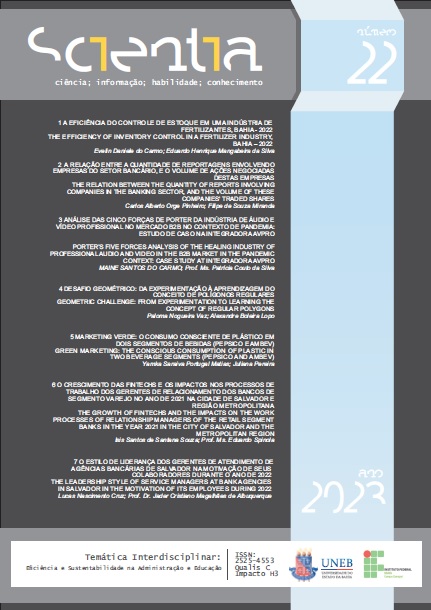MARKETING VERDE: O CONSUMO CONSCIENTE DE PLÁSTICO EM DOIS SEGMENTOS DE BEBIDAS (PEPSICO E AMBEV)
Abstract
This article presents an analysis of the sustainable marketing planning of two Brazilian companies, PepsiCo and Ambev. These companies adopted actions to reduce the amount of plastic material in the environment, in their logistical model of distribution and production of products available for the Brazilian market, in the year 2022. The study was prepared from the following problem: which action aimed for green marketing, with emphasis on plastic reduction, is being developed by the companies PepsiCo and Ambev that operate in the drink segment? The objective of this research is to analyze the sustainable planning actions of the companies PepsiCo and Ambev, aimed at reducing plastic waste in the environment, based on adherence to sustainable marketing. For this, a research with a qualitative deductive approach was carried out, with an exploratory and comparative nature for data analysis, with the use of bibliographic research and the internet. It was noted that the PepsiCo and Ambev organizations have adopted initiatives that replace plastic raw material with paper in straws, have established partnerships with suppliers aligned with the sustainable strategy and have encouraged projects of startups and cooperatives responsible for the collection and recycling of plastic waste. Therefore, these actions reflect green marketing strategies for brand positioning, gaining a competitive advantage in the market, characterizing both beverage segments as ecologically sustainable companies, promoting their role in influencing current consumption trends.
Downloads
Downloads
Published
How to Cite
Issue
Section
License

This work is licensed under a Creative Commons Attribution-NonCommercial-NoDerivatives 4.0 International License.
A partir da submissão entende-se como automática a cessão dos direitos autorais para a Revista, uma vez tendo sido aprovado e aceito para publicação.
From the submission is understood as automatic the assignment of copyrights to the Journal, once it has been approved and accepted for publication.





